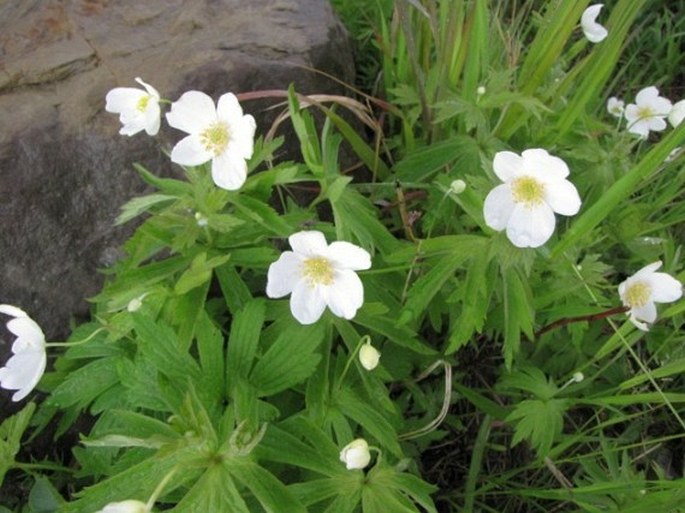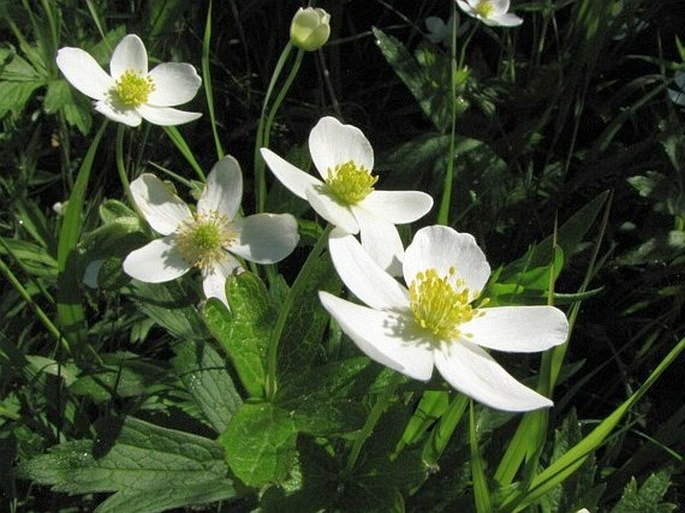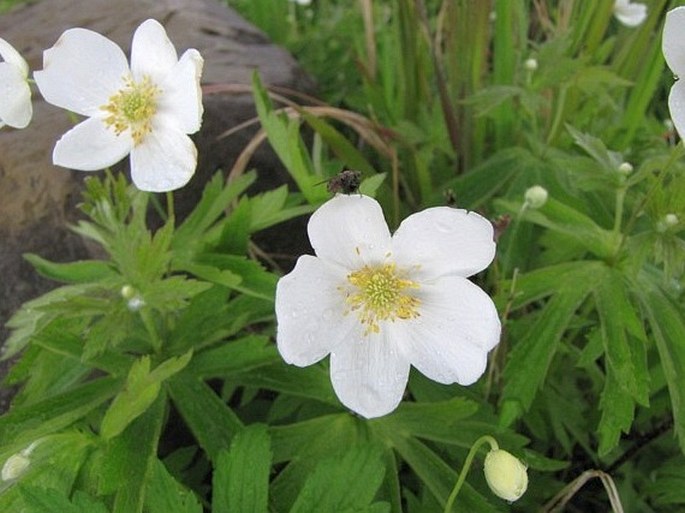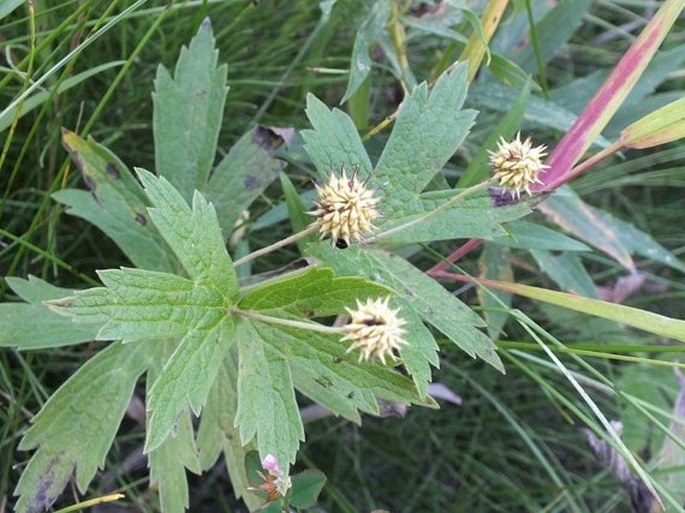Syn.: Aiolon canadense Nieuwl. et Lunell, Anemone dichotoma var. canadensis (L.) MacMill., Anemonidium canadense (L.) Á. Löve et D. Löve, Nemorosa canadensis Nieuwl.
Family: Ranunculaceae Juss.

Distribution: North American species found from Northwest Territories across Canada and in US in a wide area south of Great Lakes and in a narrow strip from Wyoming, Colorado and New Mexico.
Ecology: Open forests and wet areas of grasslands in elevations from 200 to 2800 m. Blooms in June and July, which is later than Anemone multifida.

Description: Perennial herb with stems 20–70 cm tall, from caudices and rhizomes. Basal leaves 1–5, 4–10 × 4–7 cm, palmately divided in 3–5 lobes, each with 3 serrated tips, prominent veins, petioles 10–20 cm long; stem leaves similar, sessile. Flowers terminal, solitary, sometimes 2 or 3, peduncle long, hairy, 3 leaf-like bracts, flowers white, 2.5–3 cm across; sepals 5–6, petal-like; stamens and pistils numerous. Fruit is an achene, 3–6 mm long, pointed, fruiting head globe-shaped.
Threat and protection: This species is listed as endangered in Connecticut, Maryland and Tennessee.
Note: Native tribes used the crushed leaves and roots as poultice and brewed a tea to stop nosebleeds and to treat sores and wounds.



These images were taken in Canada, Alberta, Calgary, Confluence Park (spring and summer 2013 and 2015).


